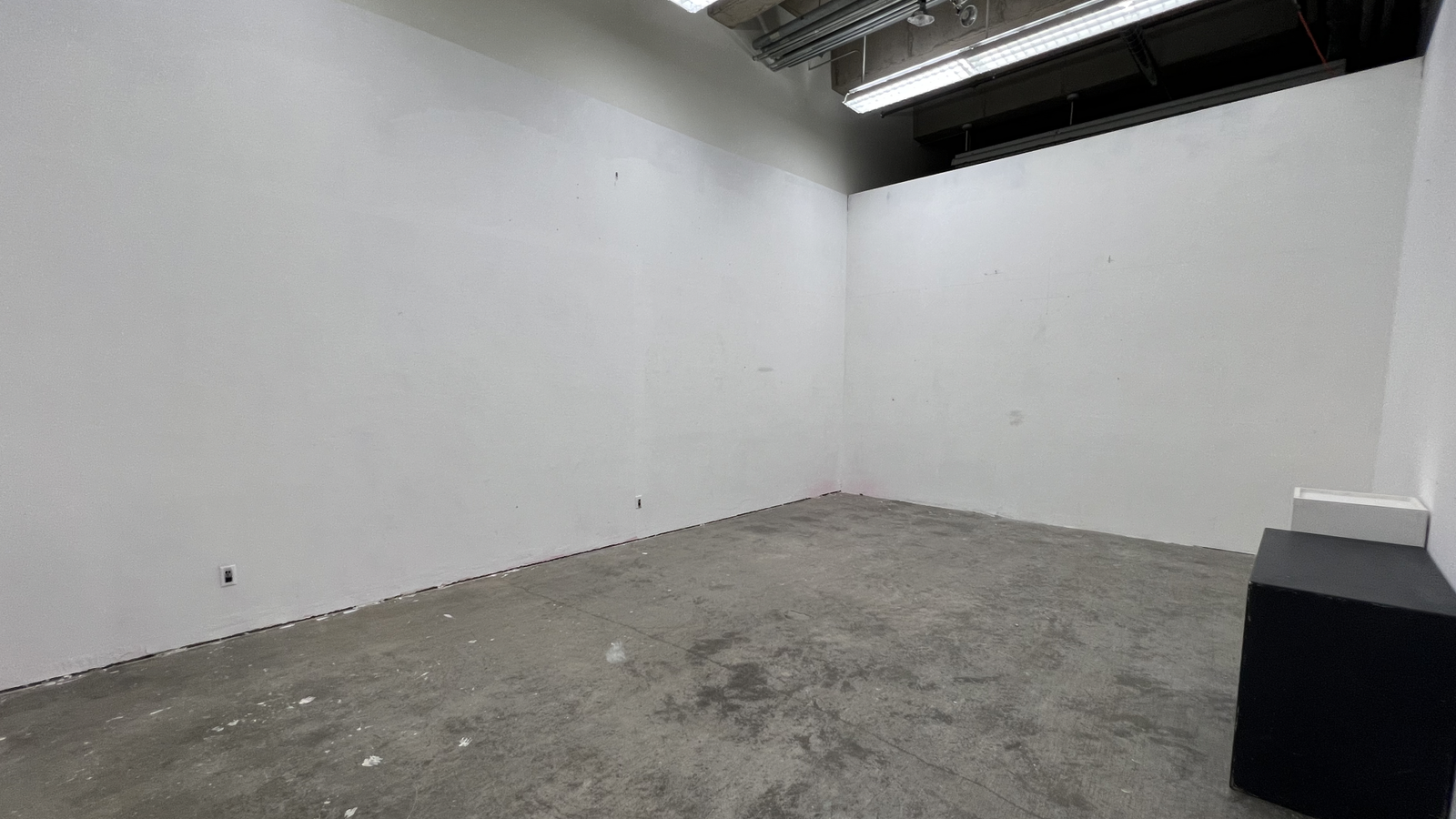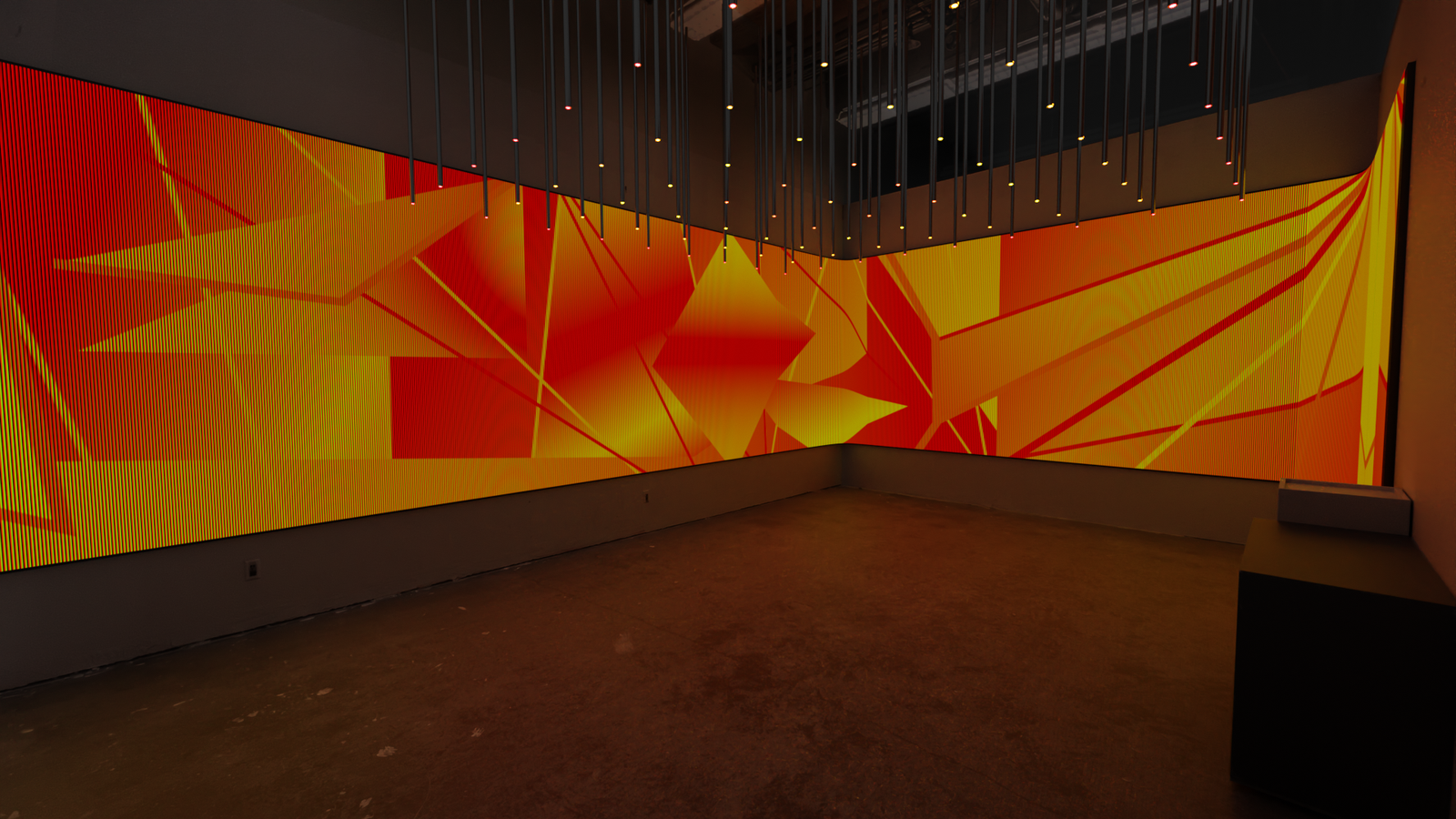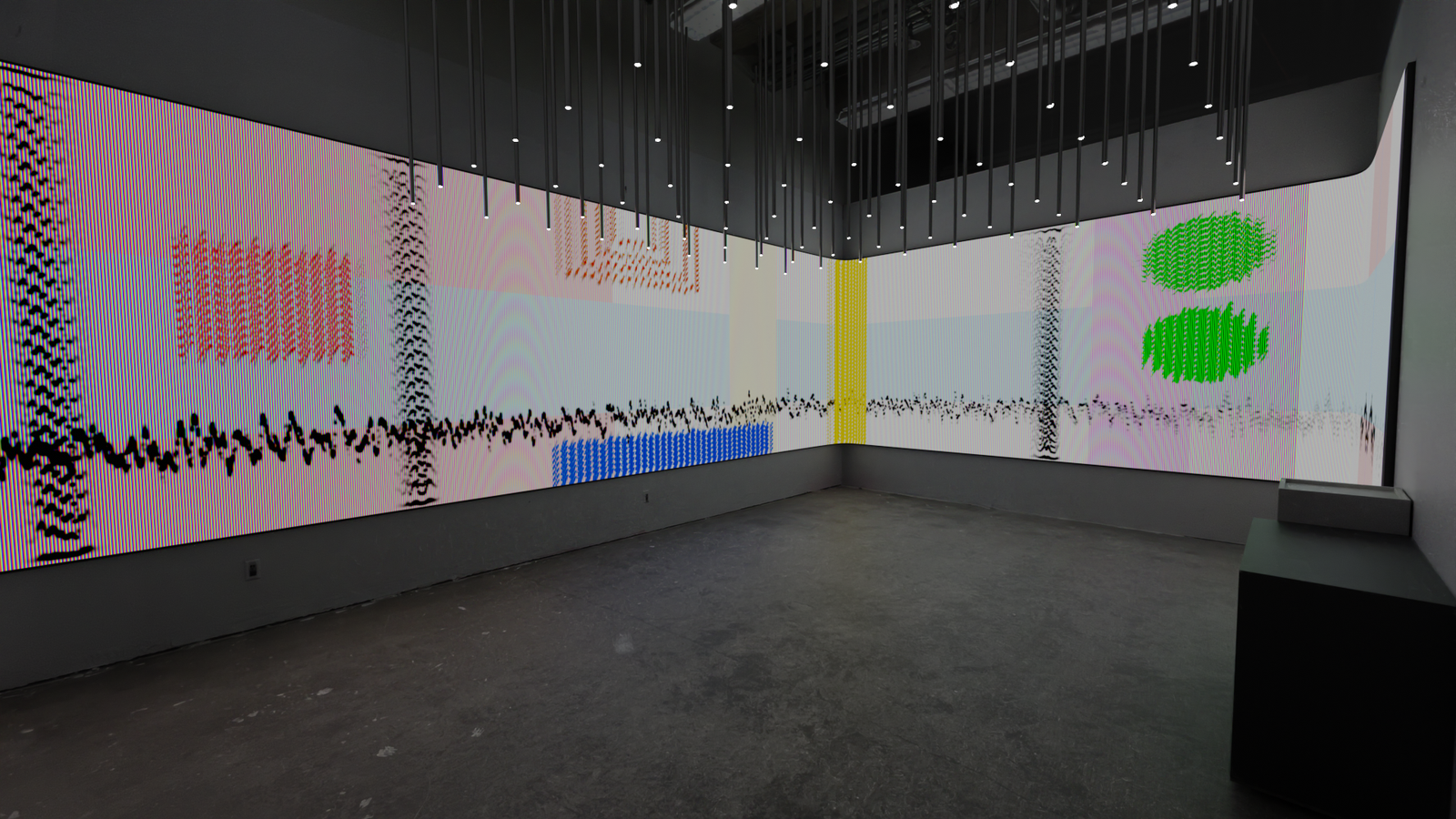ARTISTS ROOM
The Artists Room Demo is a previsualization of a studio space turned into an artistic experience users can be a part of. This project takes data from participants about their taste in music, current mood and artistic style of their choice and creates a viewing experience that involves a large screen and overhead lights. Behind the scenes, a complex computer algorithm sifts through the data and dictates what is displayed on screen. The algorithm updates with every new participant so the exibit is always evolving.
Conceptually, this project has its roots in my belief that everyone is an artist, hence the name 'Artist's Room.' The constant evolution of the space was purposeful, as no artist's style or output is ever truly unchanging. With every piece of input, whether that be other art or things that happen in my life, my artistic expression changes. The data I chose to take was purposeful as well. Music and artistic style serve as universal sources of basic creative taste, and current mood lends a heavy hand to the overall tone of a piece during its creation.
The visuals for Artist's Room have three main controllable components that all work in tandem with one another. The shapes and movement, the style of the shapes, and the background and color palette. The types of shapes and movement are dictated by participants' chosen artistic movement, examples being modernism, minimalism, expressionism, etc. Movement can range from how shapes come in and out of the frame to how they interact with each other while present. The style of the shapes are controlled by participants' taste in music. If a viewer likes techno music for example, the visuals will have a more retro feel. The background and general color palette are controlled by participants' current mood. Through the use of a mood chart, code checks the category and intensity of an entered feeling and assigns it a color with warmer colors going with happier emotions and cooler going with more sad ones. The saturation of the colors is tied to the intensity of the entered emotion. The overhead lights are an array of thin metallic tubes that hang from the ceiling. Their lights have a grid-like pattern and change with the on screen visuals. With all of these factors combined, the on screen visuals are guaranteed to always provide a unique experience for any viewer.
Some inspirations for this project include Refik Anadol's Unsupervised, Framestore Immersive's Art of You, and the Van Gogh Immersive Experience. Note that this is purely a previsualization of what this project could look like in a specific studio space and not a completed version.
Below are renders of the room.


Above is a picture of the room taken on a phone, then a previsualization of what it would look like with the screens and lights installed.

Visuals and lights with survey entries 'techno music, expressionism and sad'

Visuals and lights with survey entries 'pop music, cubism and happy'

Visuals and lights with survey entries 'metal music, minimalism and thoughtful'
(live visuals coming late May)